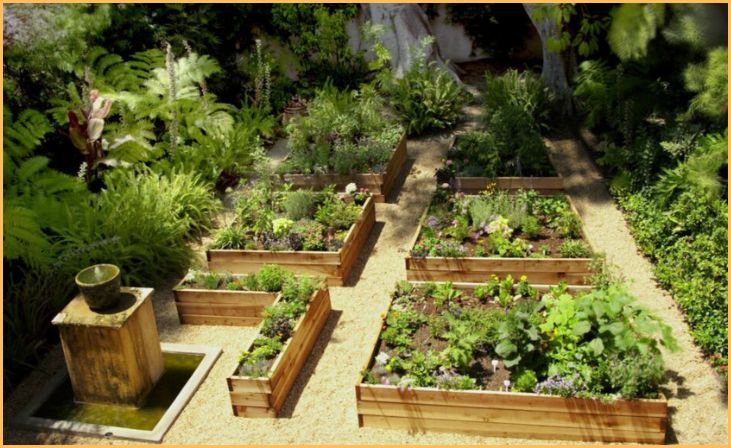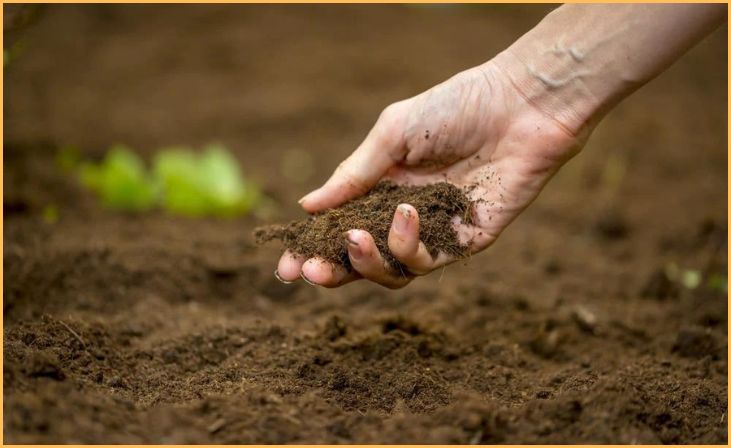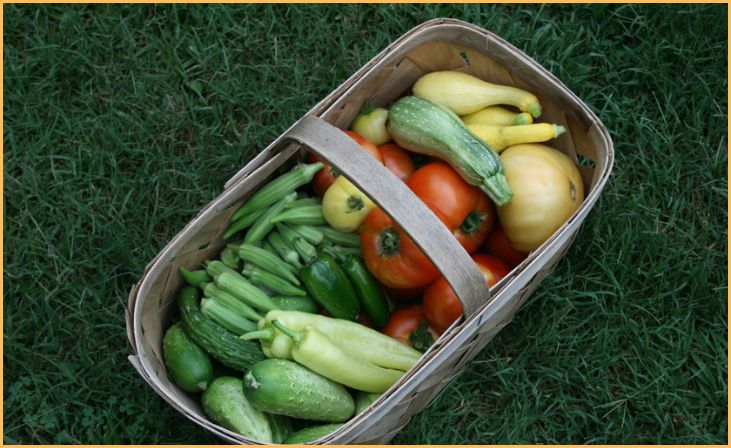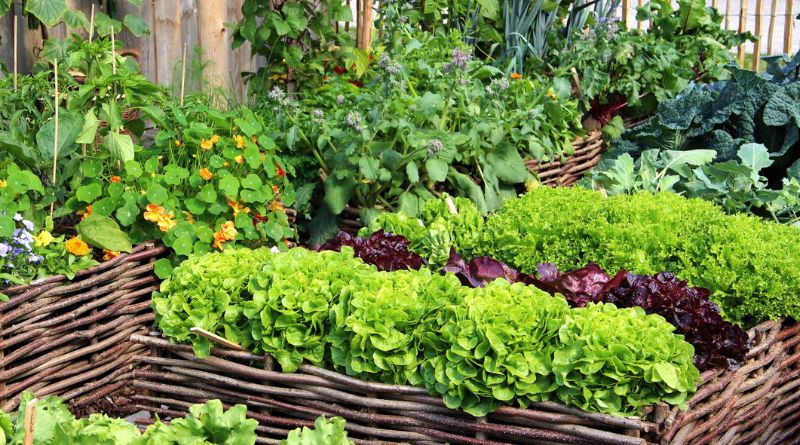Embarking on the journey of establishing your first vegetable garden is akin to stepping into a world of boundless possibilities, where the promise of fresh, homegrown produce and a profound connection to nature awaits. This exciting endeavor is not merely about planting seeds in the soil; it’s about cultivating a vibrant ecosystem that sustains life and nourishes both body and soul. In this comprehensive guide, we will delve into the intricacies of successful vegetable gardening, unraveling the 10 keys to unlock a realm of bountiful harvests and unparalleled joy. Through a careful exploration of each key, we aim to provide not just information but a roadmap for novice gardeners to navigate the challenges and relish the triumphs of their gardening journey.
10 Keys To Successfully Establishing Your First Vegetable Garden
Choose the Right Location

It is important to take into consideration the orientation of your garden when choosing the ideal location. Plants that thrive in the sun are best suited for growing in areas that face south because they receive the most sunlight throughout the day. Keep an eye on the movement of shadows across your yard to ensure that each bed receives the same amount of sunlight. In addition to this, ensure that the drainage patterns of your garden area are evaluated. With the goal of preventing water accumulation, which could result in root rot, you should strive for a slight slope.
Also Read: 7 Best Cool Season Annuals For Winter Gardens
Plan Your Layout
When designing the layout of your garden, be sure to take into consideration the use of companion planting. Basil and tomatoes are two examples of plants that, when grown together, provide mutual benefits to one another. Companion planting has the potential to increase soil fertility, deter pests, and make the most efficient use of space. You can maximize the use of vertical space by employing vertical gardening techniques such as trellises or cages. This is especially beneficial for growing vining crops such as cucumbers and beans.
Select Suitable Vegetables
When you go beyond the fundamentals, you should look into heirloom varieties as well as varieties that have adapted to the local environment. These are typically characterized by their unique flavors and their capacity to adapt to the microclimate of the specific location in which they are grown. Additionally, in order to guarantee that you will have continuous harvests, you should stagger the times that you plant your crops. For instance, if you want to make sure that you have a steady supply of lettuce, you should plant seeds every few weeks rather than waiting for a single harvest that is so abundant that it leaves you feeling overwhelmed.
Prepare the Soil

It is necessary to conduct a comprehensive analysis of the soil in order to ascertain whether or not there are deficiencies in micronutrient deficiencies. You should supplement your soil with specific amendments that are based on the requirements of your soil in order to guarantee that your plants have a foundation that is both well-balanced and abundant in nutrients. It is possible that you should consider incorporating cover crops during the off-season in order to achieve the goals of preventing soil erosion, suppressing weeds, and improving the structure of the soil.
Plant at the Right Time
When determining the optimal planting schedule for your garden, it is important to take into account the various microclimates that are present within the garden. There is a possibility that regions with lower temperatures are suitable for early spring crops, whereas regions with higher temperatures are recommended for plants that thrive in high temperatures. Your growing season can be extended by using season extenders such as row covers or cold frames. This will allow you to push the boundaries of your growing season. The cultivation of crops that would otherwise be difficult to cultivate will be made possible as a result of this.
Water Wisely
It is recommended that you install a drip irrigation system that is fitted with a timer in order to keep the level of moisture at a consistent level continuously. Putting in rain barrels gives you the ability to collect rainwater for the purpose of watering in an environmentally responsible manner. Certain vegetables, like tomatoes, require a constant supply of moisture, whereas other plants, like herbs, do better in conditions that are slightly drier. It is essential to take into account the specific water requirements of each plant, as it is extremely important to take into account the specific water requirements of each plant.
Mulch for Moisture and Weed Control
If you want to choose the right kind of mulch for your garden, you should take into consideration the specific needs of your garden. While the use of inorganic mulches, such as plastic, can effectively suppress the growth of weeds, the decomposition of organic mulches over time contributes to the fertility of the soil. Organic mulches are a type of mulch that are made from organic materials. Consider conducting experiments with living mulches, such as clover, which not only helps to maintain moisture but also fixes nitrogen, which is beneficial to plants that are located in close proximity to the mulch.
Fertilize Appropriately
In order to make dynamic adjustments to the amount of fertilizer applied, it is important to implement a soil testing schedule throughout the growing season. For a speedy increase in nutrient content, you can make use of compost tea or organic liquid fertilizers. Think about the ratios of nutrients, making sure that there is a suitable balance for the various stages of developing. In order to provide plants with a direct supply of nutrients, foliar feeding is an effective method, particularly during times of rapid growth.
Monitor for Pests and Diseases
Through the cultivation of an environment that is abundant in biodiversity, you can improve your pest management. Beneficial insects, such as ladybugs and predatory beetles, can be introduced into an area in order to achieve the goal of naturally controlling pest populations. Setting up pheromone traps is something you should do if you want to keep an eye on and gain control over insect pests. The rotation of crops should be done on a regular basis in order to prevent the accumulation of diseases and pests that are transmitted through the soil in specific areas.
Also Read: Plants That Keep Deer Out of Your Yard (2023)
Harvest at the Right Time

In order to improve your harvesting techniques, you should pay attention to the window of time that is ideal for harvesting each individual vegetable. Coloration, flavor profiles, and texture are all important factors to take into consideration. When harvesting root vegetables like carrots, it is essential to avoid damaging them by using a gentle twisting motion. When this is done, it will help prevent any damage from taking place. It is essential to implement succession tree planting in order to ensure a continuous harvest throughout the season. This will foster a steady supply of fresh produce, which is why it is important to implement succession planting.
Conclusion
Cultivating your inaugural vegetable garden transcends the realm of a mere agricultural pursuit; it unfolds as a profoundly rewarding journey teeming with personal growth, continuous learning, and the unparalleled joy that accompanies each harvest. This venture is not merely about nurturing plants; it’s about nurturing a newfound connection with the Earth, replete with the satisfaction of sowing, tending, and reaping the fruits of your labor. As you embark on this horticultural odyssey, the 10 keys to a successful vegetable garden emerge as guiding beacons, illuminating the path toward a thriving and abundant harvest. These keys, fortified with expert insights, serve as a compass for both novice and seasoned gardeners alike, offering a blueprint for transforming your garden into a flourishing haven of verdant abundance.
Frequently Asked Questions
A. Implement companion planting, use natural predators, and consider organic solutions like neem oil.
A. Easy-to-grow varieties such as tomatoes, peppers, and lettuce are perfect for novice gardeners.







